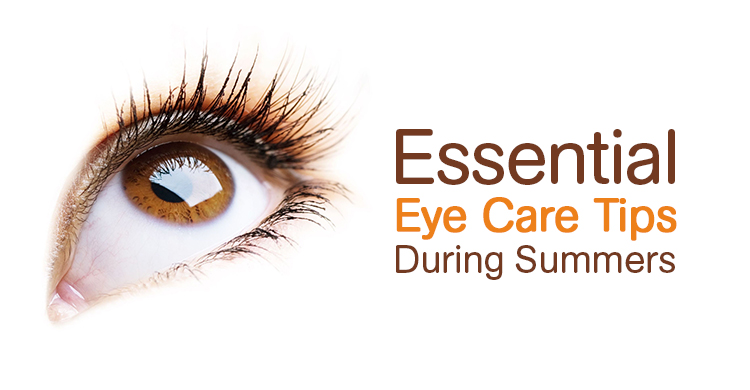The Complete Breakdown of Retina Disorders and Exactly How They Affect Your Vision
The intricate network of cells in the retina plays an essential function in translating light into the photos that allow us to view the world around us. Retina disorders can interrupt this fragile process, resulting in a range of vision problems. Recognizing the complexities of these disorders is essential for realizing just how they impact your vision and the possible effects they might have on your total eye health and wellness. By checking out the composition of the retina, common conditions that can affect it, their reasons, signs, and readily available treatment options, we can obtain useful insights right into preserving and shielding our vision.
Overview of Retina Anatomy
The intricate framework of the retina works as the structure for visual understanding and plays an essential role in the process of converting light into neural signals for the mind to translate. Found at the back of the eye, the retina contains numerous layers that collaborate flawlessly to promote vision. At the core of this intricate structure are photoreceptor cells recognized as rods and cones. Poles are in charge of vision in reduced light problems and finding motion, while cones are vital for shade vision and in-depth aesthetic acuity. These photoreceptor cells convert light power right into electrical signals that are then processed by various other retinal cells, such as bipolar cells and ganglion cells. The bipolar cells beam from the photoreceptors to the ganglion cells, which consequently send these signals with the optic nerve to the mind for visual processing. Recognizing the elaborate composition of the retina is basic in comprehending how vision features and exactly how various retina disorders can impact visual assumption.

Typical Retina Disorders
Retina conditions include an array of problems that influence the intricate structure of the eye responsible for visual processing. One usual disorder is age-related macular degeneration (AMD), a leading root cause of vision loss in people over 50. AMD affects the macula, a component of the retina essential for sharp central vision, resulting in blurriness or dead spots in the central visual field.
One more common problem is diabetic retinopathy, happening in individuals with diabetes. High blood sugar degrees harm the capillary in the retina, causing vision impairment or blindness if left untreated. Retinal detachment is a severe disorder where the retina pulls away from its regular setting, triggering an abrupt onset of floaters, flashes of light, or loss of vision in a curtain-like pattern.
Lastly, retinitis pigmentosa is a group of congenital diseases that cause the malfunction and loss of cells in the retina, bring about evening blindness and a gradual narrowing of the visual field - neurologist Andalusia. Comprehending these usual retina problems is critical in protecting vision and seeking timely medical intervention
Reasons For Retina Disorders
Different variables add to the development of retina problems, including hereditary tendencies, lifestyle selections, and underlying health and wellness problems. Genetic tendencies play a significant duty in numerous retina disorders, such as retinitis pigmentosa and macular degeneration. People with a household history of these conditions go to a greater risk of creating them because of acquired hereditary anomalies influencing the retina's feature.
Way of living selections can likewise affect retina wellness. Cigarette smoking, for instance, has actually been connected to an increased threat of age-related macular deterioration, a typical retina problem that can bring about vision loss. Poor nutritional practices doing not have important nutrients like vitamins A, C, and E, along with omega-3 fats, can also add to the advancement of retina problems.
Diabetic retinopathy, a problem of diabetic issues, can trigger damage to the blood vessels in the retina, leading to vision disability. High blood pressure can result in hypertensive retinopathy, where high blood stress impacts the blood vessels in the retina, potentially triggering vision issues.
Signs And Symptoms and Medical Diagnosis
Given the significant impact that triggers such as hereditary predispositions, way of life selections, and underlying wellness conditions can have on the advancement of retina disorders, it is important to recognize the symptoms and utilize efficient analysis techniques for early discovery and administration. Signs and symptoms of retina disorders can vary depending upon the particular condition however might include blurred or distorted vision, the unexpected look of floaters or flashes of light, a dark spot in the center of your vision, or a steady loss of main vision. It is essential to look for instant medical attention. if you experience any of these signs.
Detecting retina conditions generally entails an extensive eye assessment, which might consist of visual acuity tests, dilated Find Out More eye tests, optical read this post here comprehensibility tomography (OCT), fluorescein angiography, or various other imaging tests. Your eye care provider might likewise inquire about your clinical background and any kind of family members background of eye conditions. Early detection with regular eye tests is essential to avoid vision loss and managing retina problems efficiently. If diagnosed with a retina problem, your health care copyright will certainly deal with you to establish a tailored treatment strategy to protect your vision.

Therapy Alternatives and Administration
Efficient monitoring of retina disorders involves a diverse strategy that incorporates tailored treatment choices to resolve certain conditions and protect aesthetic function. Therapy alternatives for retina disorders vary depending upon the underlying cause and severity of the condition. In situations of retinal detachment, medical treatments such as vitrectomy or scleral buckling might be necessary to prevent and reattach the retina vision loss. For conditions like age-related macular deterioration (AMD), therapies like anti-VEGF injections or laser therapy can aid reduce illness progression and preserve remaining vision.
In diabetic person retinopathy, managing blood glucose levels is essential to prevent more damages to the capillary in the retina. Furthermore, therapies like laser surgery or shots may be recommended to decrease swelling and stop vision loss. Routine eye examinations and very early detection of retina conditions are vital for successful monitoring and treatment end results. Individuals with retina disorders need to work very closely with their ophthalmologist to develop a tailored treatment strategy that resolves their particular demands and assists keep ideal aesthetic feature.
Conclusion
Finally, understanding the anatomy of the more tips here retina, typical conditions, triggers, signs, medical diagnosis, and treatment alternatives is vital in managing vision problems. Retina problems can dramatically influence vision and lifestyle, making very early detection and proper monitoring important. By staying educated concerning these problems and seeking proper treatment, individuals can better preserve their vision and preserve general eye health and wellness.

Recognizing the detailed anatomy of the retina is fundamental in comprehending exactly how vision functions and how different retina disorders can affect visual understanding.
Retinal detachment is a serious problem where the retina pulls away from its typical position, triggering a sudden start of drifters, flashes of light, or loss of vision in a curtain-like pattern.
Signs and symptoms of retina problems can differ depending on the particular problem yet might consist of obscured or misshaped vision, the abrupt look of advances or flashes of light, a dark area in the facility of your vision, or a progressive loss of central vision.In final thought, comprehending the anatomy of the retina, typical problems, triggers, signs and symptoms, diagnosis, and treatment options is crucial in managing vision problems.